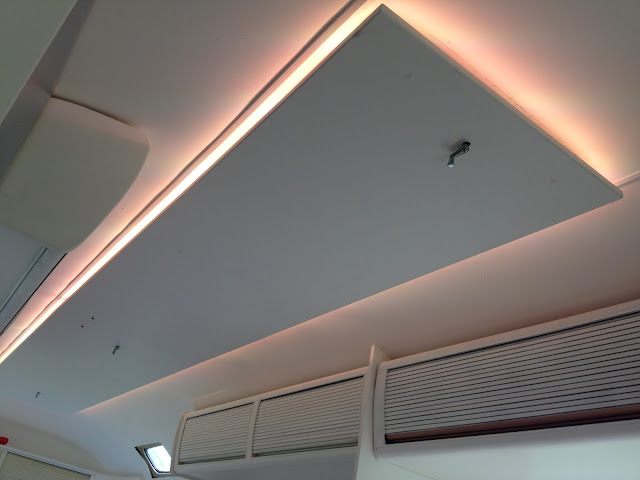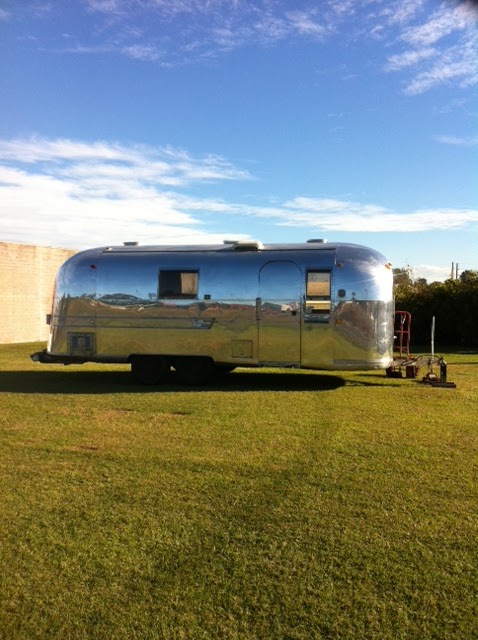After you have narrowed down to a shortlist of years and models, you need to start looking for a particular trailer.
Who am I kidding really, your already looking at ad listings, maybe you've even bid on a couple. We'll in any case, there are really two steps to this part... Finding trailers that are for sale and evaluating them to see if they are a good buy.
Finding Candidates
For us in Australia, I think there are really only 4 ways to do this.
1. eBay
Website: www.ebay.com
Pros
- Easy searching and watching (i.e. you can set up watch lists and see what price trailers go for).
- Pay with your preferred method - paypal is cheaper and more convenient than a wire transfer.
Cons
- There can be a little hype as with many eBay sales.
- Apparently there are a lot of "polished turds" on there and you need to know what to look for.
- Everybody else is looking on eBay too so when a good one comes up, it doesn't last long.
- There isn't always a "Buy it Now" price so you may not know what it will eventually sell for.
- There is no opportunity to bargain or haggle.
Important eBay tips
Make sure that you are searching the US eBay site
www.ebay.com not the australian site. There will be almost no airstreams for sale on eBay in Australia. Once you find an eBay candidate, you'll need to contact the seller and explain that you'll be shipping it to Australia and ask if they are OK with what that entails.
2. Consult one of the online Airstream classifieds listings
There are a few dedicated online Airstream classifieds. These two are arguably the best.
Website: www.vintage-airstream.com
Pros
- Vey easy to search as they are often categorised by model and year.
- They usually have great pictures.
- Sellers are often a little more in the know so they tend to have already provided answers to the important questions like if it's original or water damaged or in towable condition.
Cons
- Because sellers are in-the-know it may be harder to find a "bargain".
- All the other in-the-know airstreamers are cruising that site too so you'll have to compete with them.
3. Engage a buyer's agent
Pros
- Somebody is looking for you in places you would never think of.
- They know what to ask buyers and you may not.
- It gives you peace of mind that you will find a good one.
- It saves you a lot of time and effort (and lost revenue if you are self-employed).
Cons
- It will cost you some money (budget at least $1,000) but they will likely save you some too.
4. Search Craigslist
Pros
- There are many, many more candidates to choose from than with any other method.
- People don't always know what they have so you can find treasures.
- There are absolute bargains to be had.
Cons
- You have to put up with a site that is regularly festooned with pictures of scantily clad "singles"ads.
- There are no photos in the search results listing.
- The photos in the ad detail are usually terrible. There must be some kind of size limit on the upload because they are bad and there aren't many of them - usually a 3 photo max.
- Craigslist Airstream sellers don't seem to be very email savvy so communication can be a little difficult.
- Craigslist isn't national so you have to search state by state, region by region. But wait... no you don't, there is a sneaky way around this that gives you access to the whole of the USA! Read on...
Important Craigslist tips
-
The most important tip: Use
www.allofcraigs.com This site aggregates all of the regions so that you get a whole of USA Craigslist search.
- Sellers usually don't know which model or year they have. Keep your searches broad - try leaving off model names or lengths or years.
- Just Skype call their contact number. If you wait for them to respond to email, you may be beaten to it by a US local who simply called them on the phone.
This is the tricky part. If you have agent working for you they can give you their learned opinion but if you don't have one of those, you just have to do your research and get an idea for what to look out for.
In short, you'll want to avoid big issues that will be expensive or difficult to fix here in Australia.
Here's what to ask the seller:
- Are there any soft or sagging spots in the floor as you walk around the trailer? (evidence of water damage and rot in the sub-floor).
- Are there currently any leaks that you know about?
- Does the rear bumper separate away from the rear panels when you bounce on the bumber? (evidence of frame separation).
- Are there any dents in the exterior? What size are they? (i.e. basket ball or tennis ball) Where are they? Minor dents on flat panels may be pulled out easily whereas large creased dents in corners are nearly impossible to repair and replacement panels are prohibitively expensive.
- Have the axles, bakes and running gear (wheels and tyres) been recently serviced? Are they in good working condition?
- Do all windows open and seal correctly? Is all the glass present - have any windows been replaced with some other class or plastic (replacing with real glass - especially curved panes - is very expensive)?
- Is the plumbing all functional?
- Are all the appliances (fridge, stove, air-conditioner, etc. functional)?
An easy mistake is to evaluate the candidate based on the outside appearance. Most vintage trailers will be unpolished and may look a little ratty. Once the clear-coat is stripped, they will look wonderful. After a full polish, they will look even better.
Happy hunting.
Matt.

















































